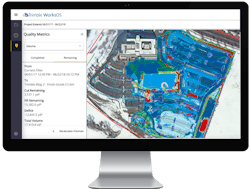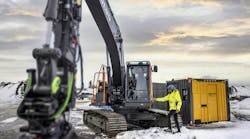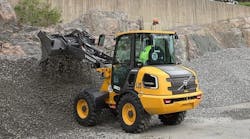Whether you’ve been using a factory-installed telematics solution or a third-party solution that your business has outgrown—the time may come when you need more capability out of your fleet and asset management platform and need an upgrade. In order to make the best decision for your operation, a careful evaluation of your business requirements is needed. The most common considerations we hear from Trimble customers are around three key areas: Mixed-fleet capability, actionable data, and ease of use and scalability.
Mixed-Fleet Capability
1 - What kinds of assets do you want to monitor and track?
- You may have a mixed fleet of on and off-highway vehicles and equipment, or you may have assets from a variety of manufacturers. Your fleet could also be a mix of company owned assets and rental equipment. Your projects and jobsites are an ever-changing mix of workers, vehicles, and equipment. If this is the case, the ability to actively monitor many types of assets will be an important factor for your business.
- Here are a few examples of what our customers track across their fleet
- Equipment and vehicle location
- Attachments and non-powered asset location
- Engine hours and running status
- Movement history
- Equipment operator history
- Vehicle mileage and driver history
- Inspection and maintenance history
- Here are a few examples of what our customers track across their fleet
2 - What should you expect from a solution that supports mixed-fleet operations?
- Many solutions boast mixed-fleet capability, but that can mean a lot of different things. Consider your current fleet, but also how you see your business scaling in the future. For example, do you envision your business increasing the percentage of rental versus company owned equipment? Or do you have plans to expand your truck fleet and driver teams, so you have less dependence on contract haulers?
- Here are a few examples of more complex mixed-fleet requirements
- Rental equipment location and engine hours
- Monitoring assets from multiple manufacturers in one interface
- A variety of telematics hardware options to connect different types of assets
- Driver behavior and safety metrics for trucks and vehicles
- Here are a few examples of more complex mixed-fleet requirements
Actionable Data
3 - What data do you need to make better decisions on each project?
- From understanding your fleet’s fuel utilization to minimizing downtime or on-road incidents, it’s important that the telematics solution you choose is able to provide you the data that makes the biggest impact to your business.
- Here are a few examples of the types of data telematics software can provide from your equipment and vehicles
- Fuel and fluid levels
- Fuel utilization
- Idle time and run time
- Health and fault warnings
- Geofence entry/exit alerts
- Here are a few examples of the types of data telematics software can provide from your equipment and vehicles
4 - What data-informed actions are important for your business?
- Having complete and accurate data is one thing, but being able to turn that data into critical insights for your operation is another. When you can make informed and timely decisions for your operation, you will be one step closer to minimizing downtime.
- Here are a few examples of the process improvements our customers have put into place based on telematics data
- Proactive fleet maintenance planning
- Optimized equipment and vehicle allocation across sites
- Efficient refueling and lube runs
- Coordinated equipment pickups and deliveries to sites
- Truck and loader matching for material hauling
- Here are a few examples of the process improvements our customers have put into place based on telematics data
Ease of Use and Scalability
5 - Can your telematics solution scale with your business and from project to project?
- For a newly implemented telematics solution to be successful, it needs to be easy to configure and use. As you grow your team and your business, you’ll need to add more users and more assets to the organization. This process should be an easy one.
- Here are a few examples of what you should expect out of telematics software
- An easy-to-use and intuitive user interface
- The ability to quickly and easily configure your operation, and add new jobsites, drivers, vehicles and equipment
- The ability to integrate with multiple manufacturer telematics data feeds
- Actionable dashboards and reports that you can configure based on your business needs
- A cloud based application with the ability to run on any type of desktop or mobile device
- Here are a few examples of what you should expect out of telematics software
There is a lot to consider when choosing the right software for your construction operation. The good news is that the technology keeps improving, the data keeps getting more accurate, and the capabilities keep broadening. What this means for you is that once you find a provider that shares the same vision of how construction management software should work, you'll be on the same roadmap to adapt and grow with that vision.
Source: Trimble's Pulse Blog





